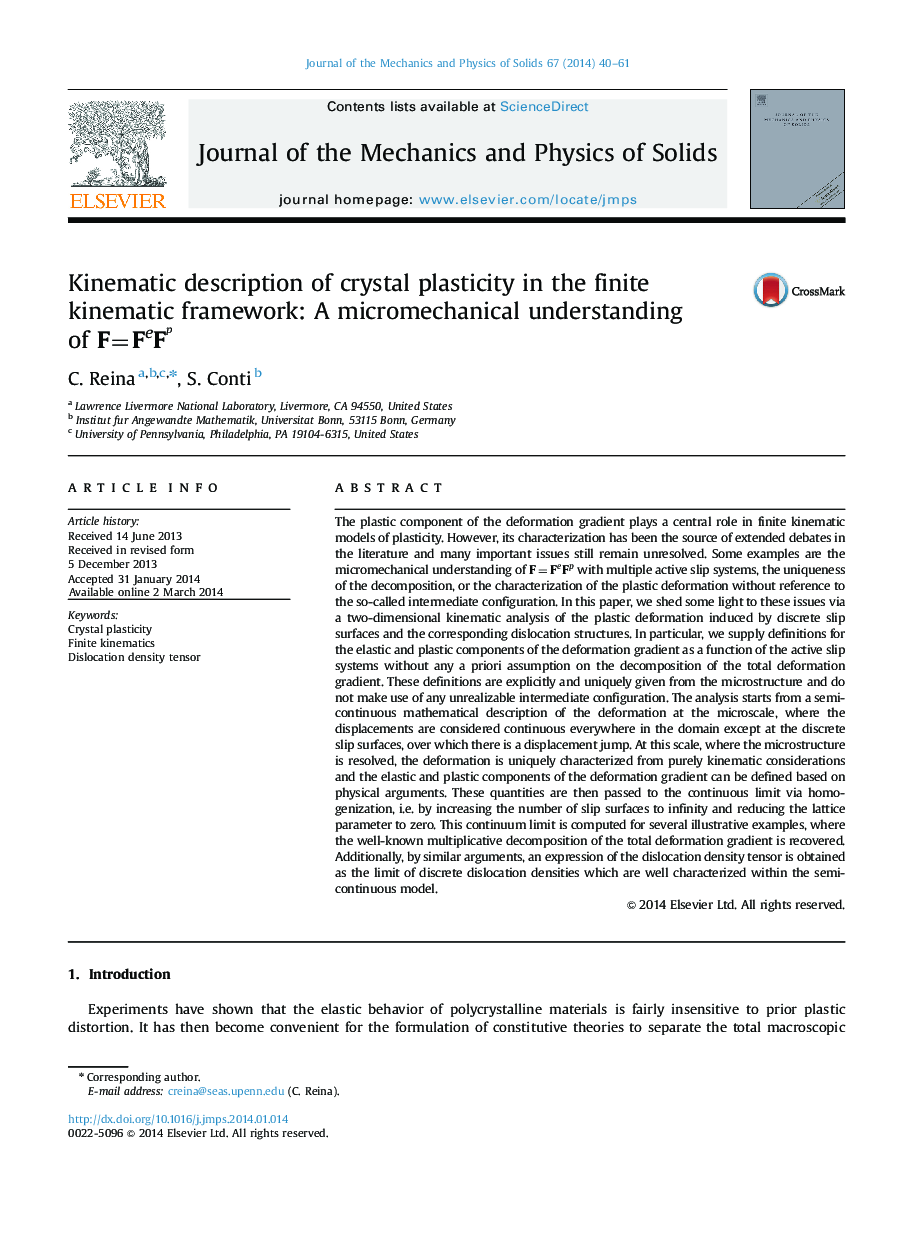| Article ID | Journal | Published Year | Pages | File Type |
|---|---|---|---|---|
| 797314 | Journal of the Mechanics and Physics of Solids | 2014 | 22 Pages |
The plastic component of the deformation gradient plays a central role in finite kinematic models of plasticity. However, its characterization has been the source of extended debates in the literature and many important issues still remain unresolved. Some examples are the micromechanical understanding of F=FeFpF=FeFp with multiple active slip systems, the uniqueness of the decomposition, or the characterization of the plastic deformation without reference to the so-called intermediate configuration. In this paper, we shed some light to these issues via a two-dimensional kinematic analysis of the plastic deformation induced by discrete slip surfaces and the corresponding dislocation structures. In particular, we supply definitions for the elastic and plastic components of the deformation gradient as a function of the active slip systems without any a priori assumption on the decomposition of the total deformation gradient. These definitions are explicitly and uniquely given from the microstructure and do not make use of any unrealizable intermediate configuration. The analysis starts from a semi-continuous mathematical description of the deformation at the microscale, where the displacements are considered continuous everywhere in the domain except at the discrete slip surfaces, over which there is a displacement jump. At this scale, where the microstructure is resolved, the deformation is uniquely characterized from purely kinematic considerations and the elastic and plastic components of the deformation gradient can be defined based on physical arguments. These quantities are then passed to the continuous limit via homogenization, i.e. by increasing the number of slip surfaces to infinity and reducing the lattice parameter to zero. This continuum limit is computed for several illustrative examples, where the well-known multiplicative decomposition of the total deformation gradient is recovered. Additionally, by similar arguments, an expression of the dislocation density tensor is obtained as the limit of discrete dislocation densities which are well characterized within the semi-continuous model.
